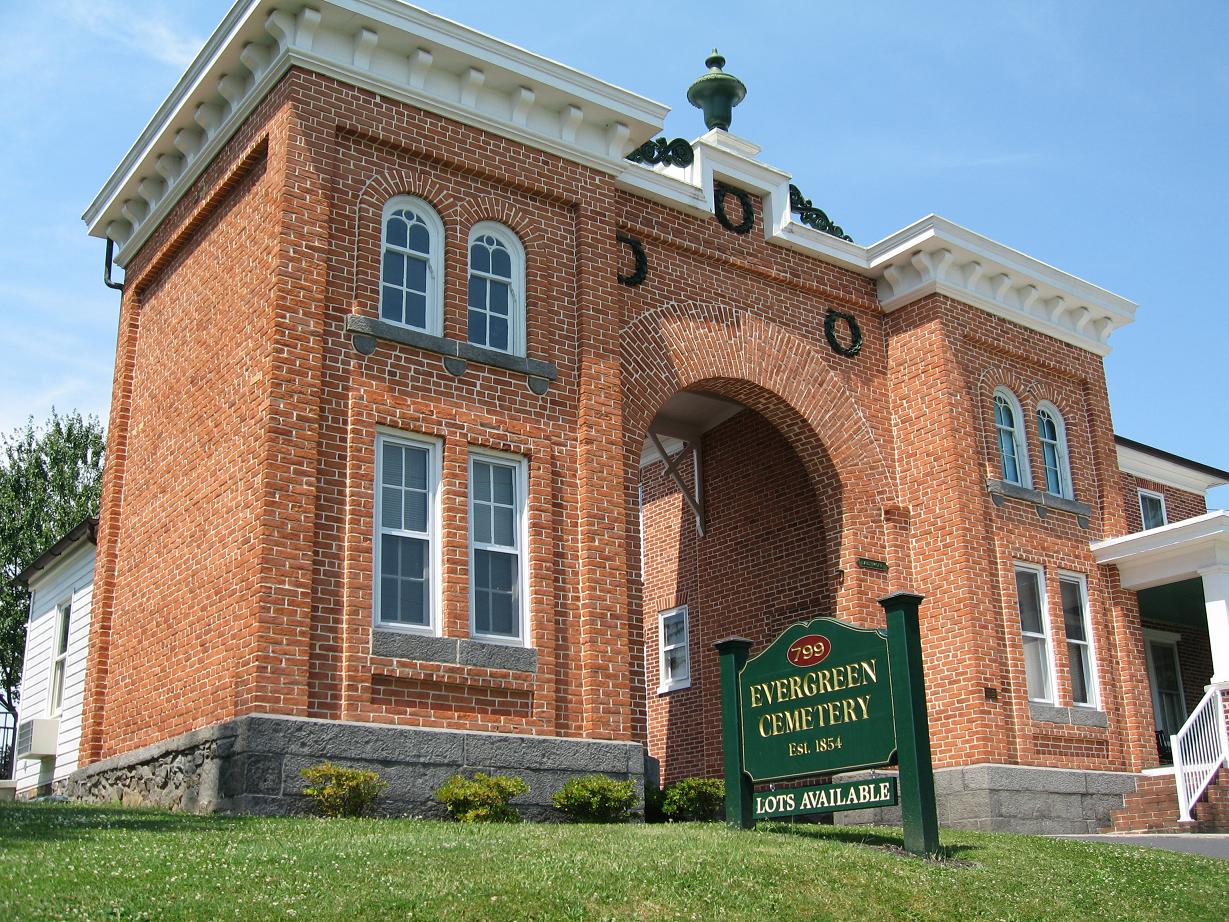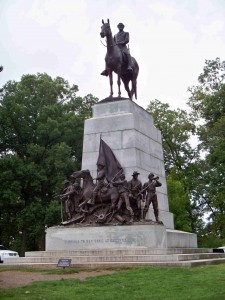Tag: Gettysburg Attractions

Autumn in Gettysburg: Fall 2024 Essential Guide
August 21, 2024Autumn in Gettysburg offers a wealth of activities for visitors and locals alike. The town’s remarkable historical past and quaint seasonal ambiance provide a diverse array of experiences to satisfy even the most discriminating traveler. Fall is a great time to visit Gettysburg if you’re a history enthusiast, a nature lover, or just a traveler searching for an exciting way to experience the stunning Central Pennsylvania harvest season!

Gettysburg’s Evergreen Cemetery: Keystone of the Battleground
January 26, 2024Imagine standing on hallowed ground, where the echoes of the past linger—a quiet sanctuary of bereavement and rest, centrally placed to witness pivotal moments in our nation’s history. Evergreen Cemetery is not just another burial ground; it’s a living testament to the town and inhabitants of Gettysburg and their sacrifices before, during, and since the Civil War.
The Virginia Monument
October 18, 2011The Civil War saw our country split in two—North and South, Union and Confederate—but regardless of who was right, both sides were fighting for their beliefs, their families, and their way of life. It’s impossible to look at it as good guys vs. bad guys because it isn’t that simple. Good men fought and died on both sides of the battlefield, and it is only right to honor them. That is why Gettysburg features statues of both Union heroes, like the Pennsylvania State Memorial, and statues of Confederate heroes, like The Virginia Monument.
The Virginia Monument was the first of the Confederate monuments to be built at Gettysburg, and it remains the largest. It was commissioned on March 9, 1908 and cost $50,000, which, in today’s money, is the equivalent of $885,000. That’s pretty expensive! It towers forty-two feet above Seminary Ridge, just East of Spangler Woods and accessible by West Confederate Ave.
The primary sculpture is a 14-foot bronze portrait of General Robert E. Lee, mounted upon his horse Traveller. Lee rides high on a 28-foot granite pedestal with seven Confederate soldiers beneath him. Their bronze eyes survey the field before them: site of the famous infantry assault of Pickett’s Charge. On the other side of the field is Cemetery Ridge, where the Union lines made their stand. There, a statue of General George Meade meets Lee’s gaze.
The seven Confederate soldiers, according to sculptor Frederick William Sievers, are representative of the men of all walks of life who left home and trade behind to serve in the military. First, there are two riflemen, one symbolic of a professional man, the other a mechanic. Beside them, a man who was an artist now aims a pistol. In the center, a boy on horseback raises the Confederate flag. To his right, a businessman swings a bayonet, a farmer raises a rifle, and a youth sounds a bugle call. These smaller portraits remind us that they were more than just soldiers.
The monument, minus the sculptures, was installed in 1913 and dedicated at the Gettysburg reunion—the 50th anniversary of the battle, which saw over 50,000 veterans gathered together from both sides of the war. The completed statue was unveiled in 1917 by Miss Virginia Carter, General Lee’s own niece, and presented by Henry C. Stuart, the governor of Virginia.
To visit this remarkable piece of history, plan your trip to Gettysburg Battlefield Tours today!
The Pennsylvania State Memorial
September 20, 2011Nothing seems to stand the test of time quite like a monument. Buildings, cities… even civilizations come and go, leaving little behind for us to glean their nature from. Monuments last. The Pyramids of Giza, the Maoi heads of Easter Island, the Parthenon: all still standing. What might future archaeologists determine about us from the Washington Monument? The Statue of Liberty? Or how about the Pennsylvania State Memorial?
 If you’re not in the know, the Pennsylvania State Memorial adorns the Gettysburg Battlefield, a tribute to the Pennsylvanian soldiers who fought there. Standing an impressive 110 feet tall, you can’t miss it; it’s the largest monument on the battlefield. The base is a pedestal, accessible by stairs, from which four grand supporting towers rise to support the dome and arches. The Northeast column houses a spiral staircase that leads to an observation deck with a breathtaking view of the battlefield: don’t miss it!
If you’re not in the know, the Pennsylvania State Memorial adorns the Gettysburg Battlefield, a tribute to the Pennsylvanian soldiers who fought there. Standing an impressive 110 feet tall, you can’t miss it; it’s the largest monument on the battlefield. The base is a pedestal, accessible by stairs, from which four grand supporting towers rise to support the dome and arches. The Northeast column houses a spiral staircase that leads to an observation deck with a breathtaking view of the battlefield: don’t miss it!
As you walk the perimeter of the monument, you will notice ninety bronze, name-covered tablets embedded in the granite surface. Each plaque represents a Pennsylvanian regiment, and each name belongs to one of the 34,530 Pennsylvanian fighting men who served his family and his country in the Battle of Gettysburg. Those who were killed in the line of duty are marked with stars beside their names, to help us remember the cost of war.
Also noteworthy are the larger-than-life statues that are incorporated in the monument. Eight portrait statues, two facing in each direction, depict the heroic leaders who took part in the battle. Seven are Pennsylvanians, including General George Meade, who commanded the Army of the Potomac, and Pennsylvania Governor Andrew Curtin, who delayed Lee’s troops in Virginia and put together a state militia. The eighth statue is of President Abraham Lincoln, whose Gettysburg Address is among the nation’s most famous speeches.
Crowning the Pennsylvania State Monument is an even larger statue (21 feet tall) made with the bronze of melted-down cannons and known as The Goddess of Victory and Peace. This was modeled by sculptor Samuel Murray, who also did some bas-relief scenes and detail work on the monument. The goddess sculpture is symbolic of our preference for peace and our willingness to do what’s necessary to protect it.
What else might future archaeologists find in and around the battlefield? Visit Gettysburg and find out! Or go on our website!
